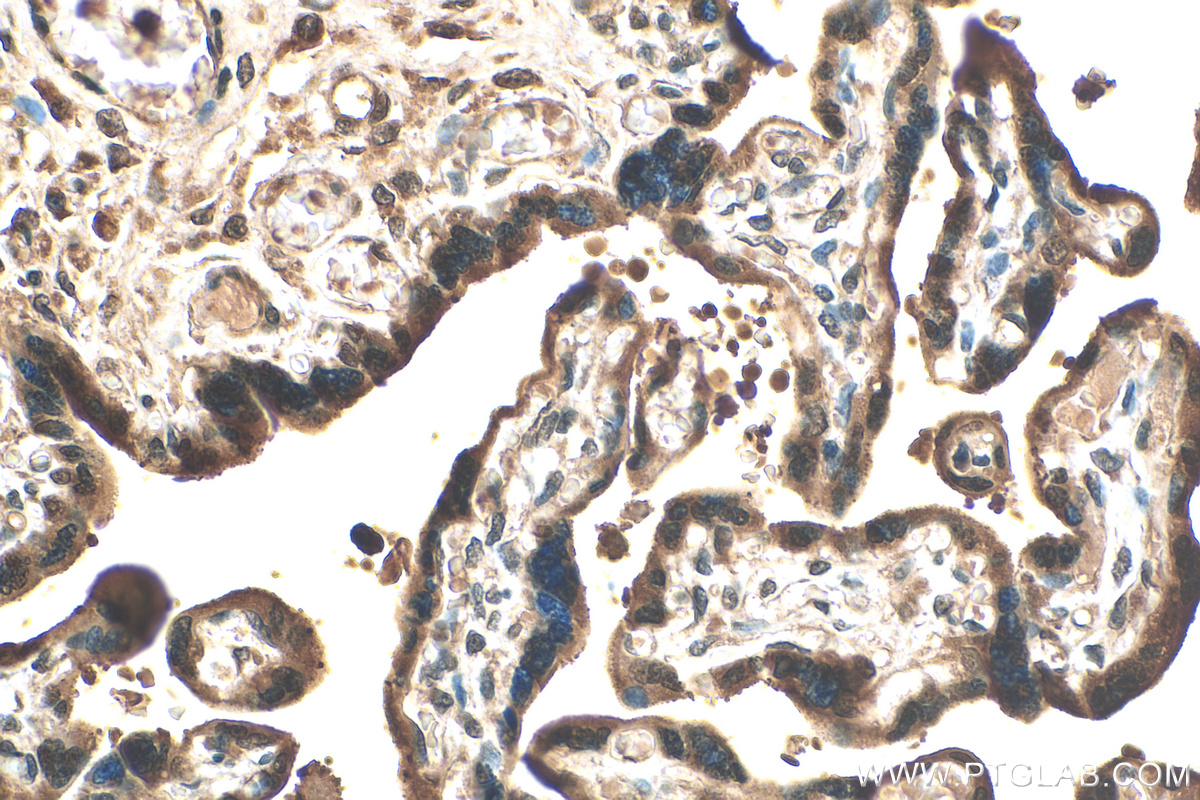验证数据展示
经过测试的应用
| Positive IHC detected in | human placenta tissue Note: suggested antigen retrieval with TE buffer pH 9.0; (*) Alternatively, antigen retrieval may be performed with citrate buffer pH 6.0 |
推荐稀释比
| 应用 | 推荐稀释比 |
|---|---|
| Immunohistochemistry (IHC) | IHC : 1:50-1:500 |
| It is recommended that this reagent should be titrated in each testing system to obtain optimal results. | |
| Sample-dependent, Check data in validation data gallery. | |
发表文章中的应用
| WB | See 1 publications below |
产品信息
30127-1-AP targets PARP14 in WB, IHC, ELISA applications and shows reactivity with human samples.
| 经测试应用 | IHC, ELISA Application Description |
| 文献引用应用 | WB |
| 经测试反应性 | human |
| 文献引用反应性 | mouse |
| 免疫原 |
CatNo: Ag32409 Product name: Recombinant human PARP14 protein Source: e coli.-derived, PET28a Tag: 6*His Domain: 1501-1640 aa of NM_017554 Sequence: SRDVMQARDEIEAMIKRVRLAKEQESRADCISEFIEWQYNDNNTSHCFNKMTNLKLEDARREKKKTVDVKINHRHYTVNLNTYTATDTKGHSLSVQRLTKSKVDIPAHWSDMKQQNFCVVELLPSDPEYNTVASKFNQTC 种属同源性预测 |
| 宿主/亚型 | Rabbit / IgG |
| 抗体类别 | Polyclonal |
| 产品类型 | Antibody |
| 全称 | poly (ADP-ribose) polymerase family, member 14 |
| 别名 | BAL2, KIAA1268, PARP 14 |
| 计算分子量 | 203kd |
| GenBank蛋白编号 | NM_017554 |
| 基因名称 | PARP14 |
| Gene ID (NCBI) | 54625 |
| RRID | AB_3086239 |
| 偶联类型 | Unconjugated |
| 形式 | Liquid |
| 纯化方式 | Antigen affinity purification |
| UNIPROT ID | Q460N5 |
| 储存缓冲液 | PBS with 0.02% sodium azide and 50% glycerol, pH 7.3. |
| 储存条件 | Store at -20°C. Stable for one year after shipment. Aliquoting is unnecessary for -20oC storage. |
背景介绍
PARP14 (poly (ADP-ribose) polymerase family, member 14) is a PARP family member that has roles in DNA repair, B cell regulation, and focal adhesion (PMID: 25753673). The largest of all the human PARPs is PARP14. PARP14 has been reported to regulate several different pathways involved in immunity, inflammation, and genome stability (PMID: 37703374).
实验方案
| Product Specific Protocols | |
|---|---|
| IHC protocol for PARP14 antibody 30127-1-AP | Download protocol |
| Standard Protocols | |
|---|---|
| Click here to view our Standard Protocols |

